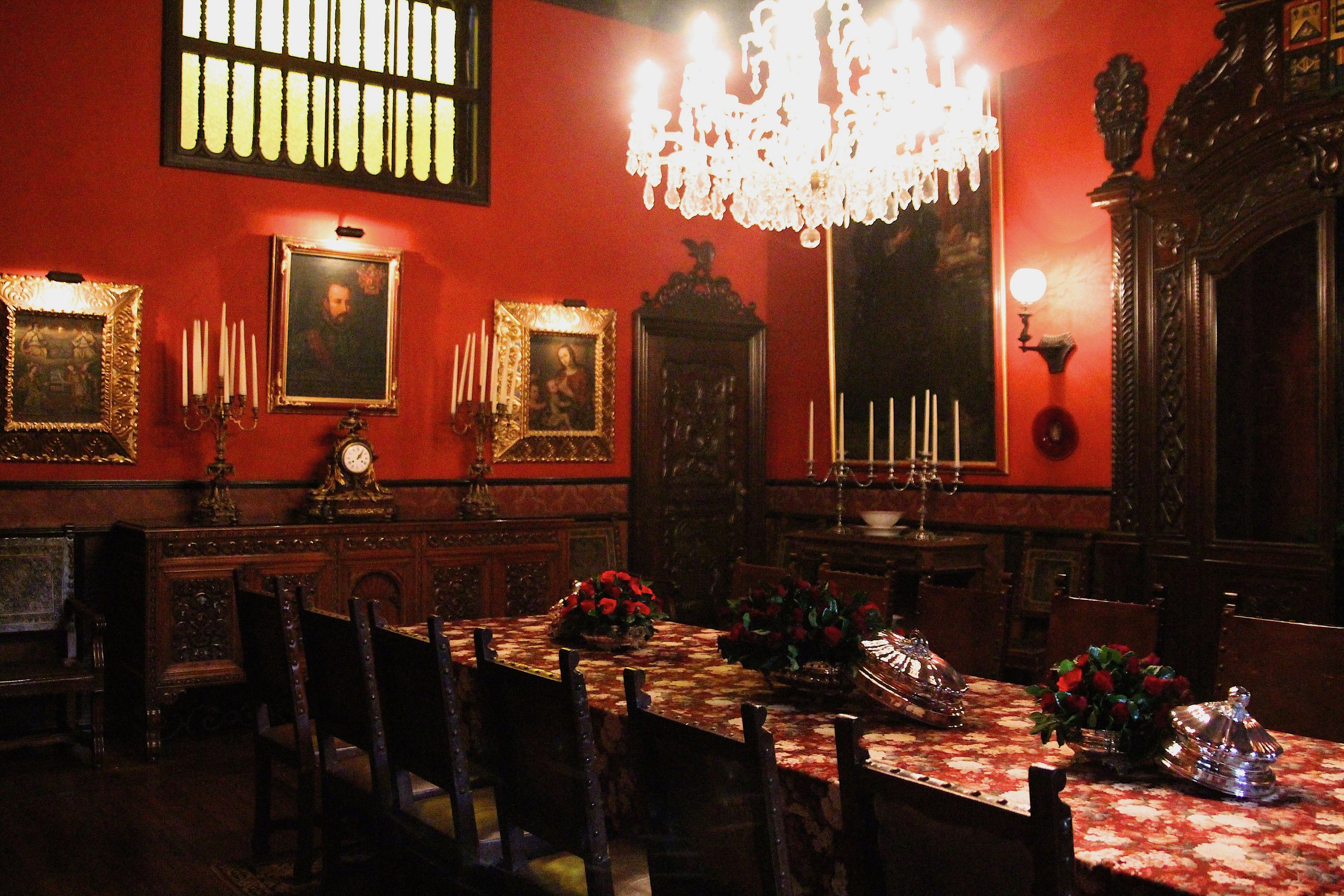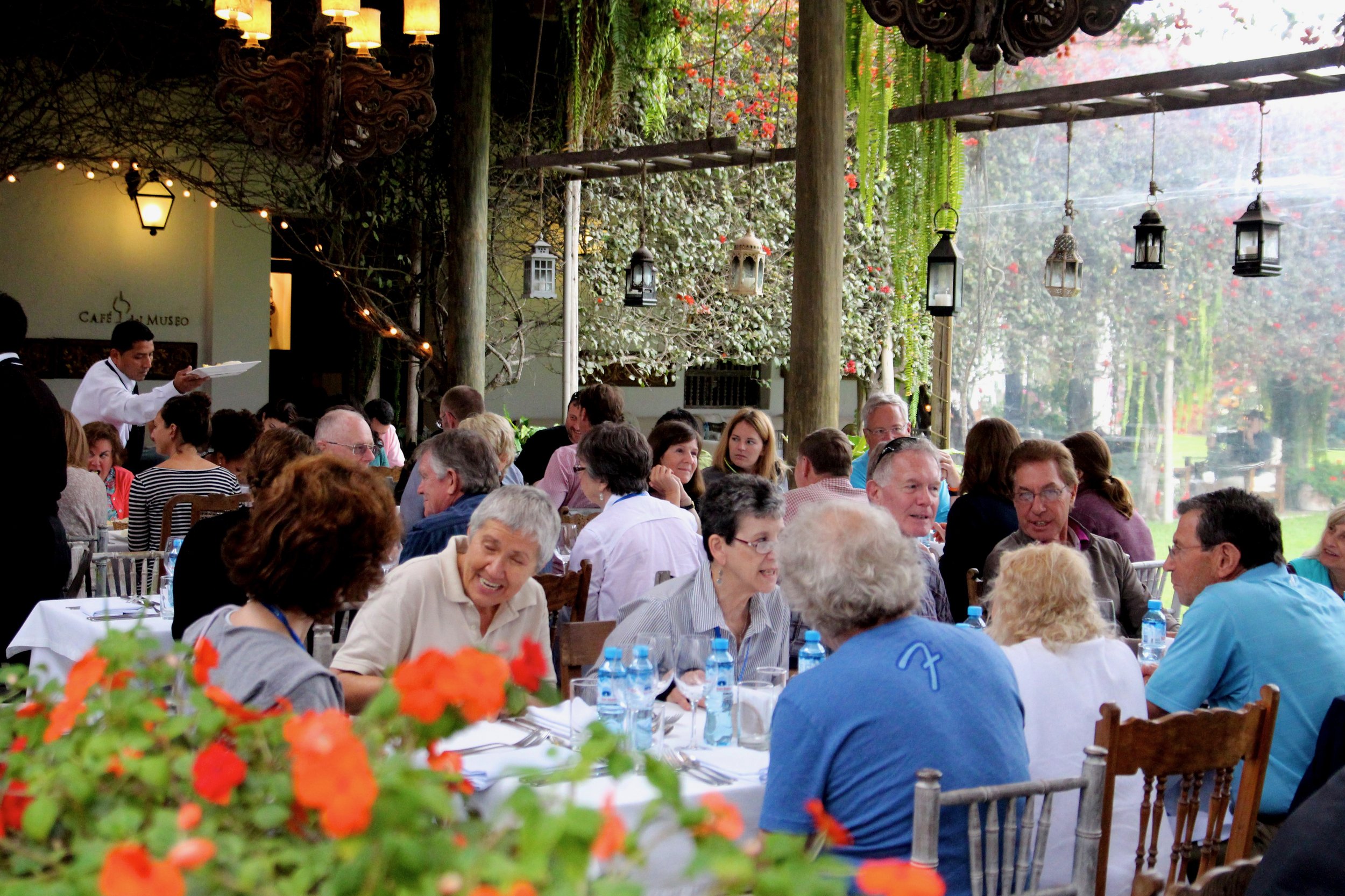DAY ONE
MONDAY, June 1 – Tuesday, June 2, 2015
exploring the history of peru’s capital city
After flying in via Miami the night before the trip started, we met our tour director Francisco at the airport, then settled into the Casa Andina hotel in Lima’s Miraflores District.
Heading into the center of Lima the next morning, we drove through the San Isidro and La Victoria neighborhoods before arriving in Lima’s central square, Plaza Mayor.
Casa Suarez, a private home built in 1939 by the eccentric Dr. Gay Suarez del Castillo, who was infatuated with becoming the president of Peru. (It never happened.) It’s a scaled replica of the Government Palace, built by the same architect.
Plaza Mayor (aka Plaza de Armas) is the birthplace of Lima and both the historic and modern center of the city. In 1523, King Charles I of Spain mandated that cities created in the New World should follow a grid centered on the square shape of a plaza.
We next made our way to Casa Aliaga, as old as Lima itself. When conquistador Francisco Pizarro founded the capital city on January 18, 1535, he gave the plot adjacent to that of the Government Palace to his trusted ally Jerónimo de Aliaga, so they could be neighbors. Eighteen generations of the Aliaga family have resided in the same mansion ever since—it’s been renovated continuously, but it’s the oldest house in the Americas.
We then walked right around the corner to the Iglesia de Santo Domingo. Built by Dominican friars in 1549, it’s one of Lima’s most storied religious sites, and notoriously the final resting place of three important Peruvian saints, whose tombs can be found in the expansive convent.
Leaving the Iglesia, we took a short bus ride to the wonderful Museo Larco. Housed in a former mansion, itself built on the site of a pre-Columbian temple, the Larco Museum contains a varied collection of 3,000 years of Peruvian ceramic, textile, and precious metal artifacts.
We first walked around the beautiful flower-covered grounds before sitting down to lunch at the museum’s cafe Kuna.
We had our first Pisco sour of the trip, a mashed potato stuffed with chicken & vegetables appetizer, traditional Peruvian dish lomo saltado as an entree (the first of many on the trip), and for dessert a mousse made out of the Andean tropical fruit lúcuma, referred to as “the gold of the Incas”
The museum itself was really incredible. In addition to the expected vast pre-Columbia Andean art collection, it’s notorious for having the world’s largest collection of erotic pottery, found by Rafael Larco Hoyle in the 1960s, as a result of his research on sexual representations in Peruvian pre-Columbian art.
Not your everyday pottery collection 👀
The funerary bundle of a child, complete with mummy inside
Our guide Sheila showing us a finely woven cloth from the Paracas culture, circa 200 CE
A weaving made of parrot feathers
One of the coolest parts of the Larco Museum is their ceramic storage facility, housing another 45,000 pieces. Overwhelming in the best way!
After leaving the Larco Museum, we headed back to the hotel for dinner and an early night in, getting ready for an early morning hopper flight to Cusco.

































































